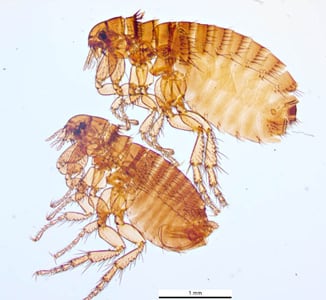It is called dwarf tapeworm. Humans are infected when they ingest food or water contaminated with eggs, contaminated hands or by ingestion of cysticercoid infected arthropods (insects, fleas). Internal autoinfection can occur leading to persistent infection. Disease may be asymptomatic or present with diarrhea, abdominal discomfort and pain. Diagnosis is made by the demonstration of eggs in stool samples.
